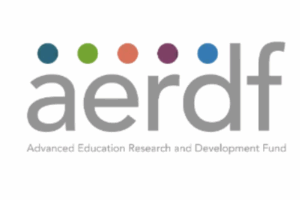Jobs & Careers
AI-Powered Feature Engineering with n8n: Scaling Data Science Intelligence


Image by Author | ChatGPT
# Introduction
Feature engineering gets called the ‘art’ of data science for good reason — experienced data scientists develop this intuition for spotting meaningful features, but that knowledge is tough to share across teams. You’ll often see junior data scientists spending hours brainstorming potential features, while senior folks end up repeating the same analysis patterns across different projects.
Here’s the thing most data teams run into: feature engineering needs both domain expertise and statistical intuition, but the whole process remains pretty manual and inconsistent from project to project. A senior data scientist might immediately spot that market cap ratios could predict sector performance, while someone newer to the team might completely miss these obvious transformations.
What if you could use AI to generate strategic feature engineering recommendations instantly? This workflow tackles a real scaling problem: turning individual expertise into team-wide intelligence through automated analysis that suggests features based on statistical patterns, domain context, and business logic.
# The AI Advantage in Feature Engineering
Most automation focuses on efficiency — speeding up repetitive tasks and reducing manual work. But this workflow shows AI-augmented data science in action. Instead of replacing human expertise, it amplifies pattern recognition across different domains and experience levels.
Building on n8n’s visual workflow foundation, we’ll show you how to integrate LLMs for intelligent feature suggestions. While traditional automation handles repetitive tasks, AI integration tackles the creative parts of data science — generating hypotheses, identifying relationships, and suggesting domain-specific transformations.
Here’s where n8n really shines: you can connect different technologies smoothly. Combine data processing, AI analysis, and professional reporting without jumping between tools or managing complex infrastructure. Each workflow becomes a reusable intelligence pipeline that your whole team can run.


# The Solution: A 5-Node AI Analysis Pipeline
Our intelligent feature engineering workflow uses five connected nodes that transform datasets into strategic recommendations:
- Manual Trigger – Starts on-demand analysis for any dataset
- HTTP Request – Grabs data from public URLs or APIs
- Code Node – Runs comprehensive statistical analysis and pattern detection
- Basic LLM Chain + OpenAI – Generates contextual feature engineering strategies
- HTML Node – Creates professional reports with AI-generated insights
# Building the Workflow: Step-by-Step Implementation
// Prerequisites
// Step 1: Import and Configure the Template
- Download the workflow file
- Open n8n and click ‘Import from File’
- Select the downloaded JSON file — all five nodes appear automatically
- Save the workflow as ‘AI Feature Engineering Pipeline’
The imported template has sophisticated analysis logic and AI prompting strategies already set up for immediate use.
// Step 2: Configure OpenAI Integration
- Click the ‘OpenAI Chat Model’ node
- Create a new credential with your OpenAI API key
- Select ‘gpt-4.1-mini’ for optimal cost-performance balance
- Test the connection — you should see successful authentication
If you need some additional assistance with creating your first OpenAI API key, please refer to our step-by-step guide on OpenAI API for Beginners.


// Step 3: Customize for Your Dataset
- Click the HTTP Request node
- Replace the default URL with our S&P 500 dataset:
https://raw.githubusercontent.com/datasets/s-and-p-500-companies/master/data/constituents.csv - Verify timeout settings (30 seconds or 30000 milliseconds handles most datasets)


The workflow automatically adapts to different CSV structures, column types, and data patterns without manual configuration.
// Step 4: Execute and Analyze Results
- Click ‘Execute Workflow’ in the toolbar
- Monitor node execution – each turns green when complete
- Click the HTML node and select the ‘HTML’ tab for your AI-generated report
- Review feature engineering recommendations and business rationale


What You’ll Get:
The AI analysis delivers surprisingly detailed and strategic recommendations. For our S&P 500 dataset, it identifies powerful feature combinations like company age buckets (startup, growth, mature, legacy) and sector-location interactions that reveal regionally dominant industries. The system suggests temporal patterns from listing dates, hierarchical encoding strategies for high-cardinality categories like GICS sub-industries, and cross-column relationships such as age-by-sector interactions that capture how company maturity affects performance differently across industries. You’ll receive specific implementation guidance for investment risk modeling, portfolio construction strategies, and market segmentation approaches – all grounded in solid statistical reasoning and business logic that goes well beyond generic feature suggestions.
# Technical Deep Dive: The Intelligence Engine
// Advanced Data Analysis (Code Node):
The workflow’s intelligence starts with comprehensive statistical analysis. The Code node examines data types, calculates distributions, identifies correlations, and detects patterns that inform AI recommendations.
Key capabilities include:
- Automatic column type detection (numeric, categorical, datetime)
- Missing value analysis and data quality assessment
- Correlation candidate identification for numeric features
- High-cardinality categorical detection for encoding strategies
- Potential ratio and interaction term suggestions
// AI Prompt Engineering (LLM Chain):
The LLM integration uses structured prompting to generate domain-aware recommendations. The prompt includes dataset statistics, column relationships, and business context to produce relevant suggestions.
The AI receives:
- Complete dataset structure and metadata
- Statistical summaries for each column
- Identified patterns and relationships
- Data quality indicators
// Professional Report Generation (HTML Node):
The final output transforms AI text into a professionally formatted report with proper styling, section organization, and visual hierarchy suitable for stakeholder sharing.
# Testing with Different Scenarios
// Finance Dataset (Current Example):
S&P 500 companies data generates recommendations focused on financial metrics, sector analysis, and market positioning features.
// Alternative Datasets to Try:
- Restaurant Tips Data: Generates customer behavior patterns, service quality indicators, and hospitality industry insights
- Airline Passengers Time Series: Suggests seasonal trends, growth forecasting features, and transportation industry analytics
- Car Crashes by State: Recommends risk assessment metrics, safety indices, and insurance industry optimization features
Each domain produces distinct feature suggestions that align with industry-specific analysis patterns and business objectives.
# Next Steps: Scaling AI-Assisted Data Science
// 1. Integration with Feature Stores
Connect the workflow output to feature stores like Feast or Tecton for automated feature pipeline creation and management.
// 2. Automated Feature Validation
Add nodes that automatically test suggested features against model performance to validate AI recommendations with empirical results.
// 3. Team Collaboration Features
Extend the workflow to include Slack notifications or email distribution, sharing AI insights across data science teams for collaborative feature development.
// 4. ML Pipeline Integration
Connect directly to training pipelines in platforms like Kubeflow or MLflow, automatically implementing high-value feature suggestions in production models.
# Conclusion
This AI-powered feature engineering workflow shows how n8n bridges cutting-edge AI capabilities with practical data science operations. By combining automated analysis, intelligent recommendations, and professional reporting, you can scale feature engineering expertise across your entire organization.
The workflow’s modular design makes it valuable for data teams working across different domains. You can adapt the analysis logic for specific industries, modify AI prompts for particular use cases, and customize reporting for different stakeholder groups—all within n8n’s visual interface.
Unlike standalone AI tools that provide generic suggestions, this approach understands your data context and business domain. The combination of statistical analysis and AI intelligence creates recommendations that are both technically sound and strategically relevant.
Most importantly, this workflow transforms feature engineering from an individual skill into an organizational capability. Junior data scientists gain access to senior-level insights, while experienced practitioners can focus on higher-level strategy and model architecture instead of repetitive feature brainstorming.
Born in India and raised in Japan, Vinod brings a global perspective to data science and machine learning education. He bridges the gap between emerging AI technologies and practical implementation for working professionals. Vinod focuses on creating accessible learning pathways for complex topics like agentic AI, performance optimization, and AI engineering. He focuses on practical machine learning implementations and mentoring the next generation of data professionals through live sessions and personalized guidance.
Jobs & Careers
NVIDIA & AMD to Now Pay 15% of China Sale Revenue to the US

US chipmakers NVIDIA and AMD recently received permission to sell their H20 and MI308 AI chips to China, respectively, amid tightened export controls. According to the latest reports, companies will now allocate 15% of their revenue from sales of these advanced chips to the US government.
The agreement follows the Donald Trump administration’s decision in April to halt H20 chip sales to China. By early 2025, Chinese firms reported severe shortages, and NVIDIA had warned of a potential $5.5 billion hit to its bottom line. Notably, last month, the administration allowed both NVIDIA and AMD to resume sales after obtaining export licences.
NVIDIA had also announced the RTX PRO GPU, a China-specific chip engineered to comply with US regulations. The RTX PRO joins the H20 and other variants, designed to maintain NVIDIA’s presence in China while adhering to legal boundaries.
China is a key market for both companies. In a visit to Beijing in April, NVIDIA CEO Jensen Huang said China was a critical market for NVIDIA and added, “We hope to continue to cooperate with China.”
Moreover, at the opening ceremony of the third China International Supply Chain Expo in Beijing this year, Huang called Chinese AI models “world-class”. This included DeepSeek, the one model that was ‘banned’ on multiple US government devices like those of NASA and the Navy.
In the same ceremony, he asserted that he has excellent relations with “just about’ every government”. “Anyone who discounts Huawei and China’s manufacturing capability is deeply naive. This is a formidable company, and I’ve seen the technologies they’ve created in the past,” he added.
Moreover, US commerce secretary Howard Lutnick said last month that the resumption of AI chip sales was part of negotiations with China to secure rare earths. He described the H20 as NVIDIA’s “fourth-best chip” and said it was in the US’ interests for Chinese firms to use American technology, even if the most advanced chips remained restricted.
The post NVIDIA & AMD to Now Pay 15% of China Sale Revenue to the US appeared first on Analytics India Magazine.
Jobs & Careers
Graas.ai Secures $9 Million to Expand AI Agent Foundry in India

Email:
info@aimmediahouse.com
Our Offices
AIM India
1st Floor, Sakti Statesman, Marathahalli – Sarjapur Outer Ring Rd, Green Glen Layout, Bellandur, Bengaluru, Karnataka 560103
AIM Americas
166 Geary St STE 1500 Suite #634, San Francisco, California 94108, United States
Jobs & Careers
Agentic AI Hands-On in Python: A Video Tutorial


Image by Editor | ChatGPT
# Introduction
Sometimes it feels like agentic AI is just AI that’s taken an improv class and now won’t stop making its own decisions. Trying to more accurately define agentic AI can feel like explaining jazz to someone who’s never heard music. It’s part autonomy, part orchestration, and 100% guaranteed to make you question who’s actually running the show.
Well, there’s no need to be confused by agentic AI any longer. This video, recently recorded from an ODSC talk and made broadly available by its creators, is a comprehensive four-hour workshop on agentic AI engineering, hosted by Jon Krohn of the Jon Krohn YouTube channel and Super Data Science podcast, and Edward Donner, co-founder and CTO of Nebula.
The video dives into the definition, design principles, and development of AI agents, emphasizing the unprecedented opportunity to derive business value from AI applications using agentic workflows in 2025 and beyond. It covers a range of frameworks and practical applications, showcasing how large language model (LLM) outputs can control complex workflows and achieve autonomy in tasks. The instructors highlight the rapid advancements in LLM capabilities and the potential for agentic systems to augment or fully automate business processes.
The workshop emphasizes the hands-on nature of the content, with an accompanying GitHub repository with all the code for viewers to replicate and experiment with. The instructors frequently stress the rapid evolution of the field and the importance of starting small with agentic projects to ensure success.
# What’s Covered?
Here are the more specific topics covered in the video:
- Defining Agents: The video defines AI agents as programs where LLM outputs control complex workflows, emphasizing autonomy and distinguishing between simpler predefined workflows and dynamic agents proper.
- The Case for Agentic AI: It highlights the unprecedented opportunity in 2025 to derive business value from agentic workflows, noting the rapid improvement of LLMs and their dramatic impact on benchmarks like Humanity’s Last Exam (HLE) when used within agentic frameworks.
- Foundational Elements: Core concepts such as tools (enabling LLMs to perform actions) are explained, alongside inherent risks like unpredictability and cost, and strategies for monitoring and guardrails to mitigate them.
- Implications of Agentic AI: The workshop also addresses the implications of Agentic AI, including workforce changes and strategies for future-proofing careers in data science, emphasizing skills like multi-agent orchestration and foundational knowledge.
Agentic AI frameworks, the tools of the agentic revolution, covered include:
- Model Context Protocol (MCP): an open-source standard protocol for connecting agents with data sources and tools, often likened to a ‘USBC for agentic applications’
- OpenAI Agents SDK: a lightweight, simple, and flexible framework, used for deep research
- CrewAI: a heavier-weight framework specifically designed for multi-agent systems
- More complex frameworks like LangGraph and Microsoft Autogen are also mentioned
Finally, the hands-on coding exercises in the video include:
- Practical demonstrations include recreating OpenAI’s Deep Research functionality using the OpenAI Agents SDK, showcasing how agents can perform web searches and generate reports
- Discussions on design principles for agentic systems cover five workflow design patterns: Prompt Chaining, Routing, Parallelization, Orchestrator Worker, and Evaluator Optimizer
- Building an autonomous software engineering team with CrewAI is demonstrated, where agents collaborate to write and test Python code and even generate a user interface, highlighting CrewAI’s ‘batteries included’ features for safe code execution
- The final project involves developing autonomous traders using MCP, demonstrating how agents can access real-time market data, leverage persistent knowledge graphs, and perform web searches to make simulated trading decisions
# Expected Takeaways
After watching this video, viewers will be able to:
- Grasp the fundamental concepts of AI agents, including their definition, core components like tools and autonomy, and the distinction between constrained workflows and dynamic agent systems.
- Implement agentic systems using popular frameworks such as those from OpenAI and CrewAI, gaining hands-on experience in setting up multi-agent collaborations and leveraging their unique features, like structured outputs or automated code execution.
- Understand and apply the Model Context Protocol (MCP) for seamless integration of diverse tools and resources into agentic applications, including the ability to create simple custom MCP servers.
- Develop practical agentic applications, as demonstrated by the recreation of deep research functionality and the construction of an autonomous software engineering team and simulated trading agents.
- Recognize and mitigate risks associated with deploying agentic systems, such as unpredictability and cost management, through monitoring and guardrails.
If you’re looking for a resource to straighten out agentic AI for you and show you how you can leverage the burgeoning technology in your AI engineering exploits for this year and beyond, check out this great video by Jon Krohn and Edward Donner.
Matthew Mayo (@mattmayo13) holds a master’s degree in computer science and a graduate diploma in data mining. As managing editor of KDnuggets & Statology, and contributing editor at Machine Learning Mastery, Matthew aims to make complex data science concepts accessible. His professional interests include natural language processing, language models, machine learning algorithms, and exploring emerging AI. He is driven by a mission to democratize knowledge in the data science community. Matthew has been coding since he was 6 years old.
-

 Events & Conferences3 months ago
Events & Conferences3 months agoJourney to 1000 models: Scaling Instagram’s recommendation system
-

 Funding & Business1 month ago
Funding & Business1 month agoKayak and Expedia race to build AI travel agents that turn social posts into itineraries
-

 Jobs & Careers1 month ago
Jobs & Careers1 month agoMumbai-based Perplexity Alternative Has 60k+ Users Without Funding
-

 Education1 month ago
Education1 month agoVEX Robotics launches AI-powered classroom robotics system
-

 Education1 month ago
Education1 month agoAERDF highlights the latest PreK-12 discoveries and inventions
-

 Mergers & Acquisitions1 month ago
Mergers & Acquisitions1 month agoDonald Trump suggests US government review subsidies to Elon Musk’s companies
-

 Jobs & Careers1 month ago
Jobs & Careers1 month agoAstrophel Aerospace Raises ₹6.84 Crore to Build Reusable Launch Vehicle
-

 Podcasts & Talks1 month ago
Podcasts & Talks1 month agoHappy 4th of July! 🎆 Made with Veo 3 in Gemini
-

 Podcasts & Talks1 month ago
Podcasts & Talks1 month agoOpenAI 🤝 @teamganassi
-

 Jobs & Careers1 month ago
Jobs & Careers1 month agoTelangana Launches TGDeX—India’s First State‑Led AI Public Infrastructure

